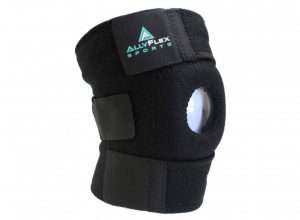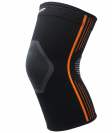Knee Brace vs Knee Sleeve
Neo Sports Lab is making premium quality knee braces and knee sleeves. By combining the superior designs with high quality material and adapting the advanced 3-D weaving technique on the state of the art manufacturing equipment, we are leading the industry in making the best knee braces and knee sleeves.
Knee Brace vs Knee Sleeve – What is the difference?
When comes to knee support accessories, there are two main types: knee brace and knee sleeve. While both provide support to knee ligaments and muscles, there are quite some differences in between them.
In a Nutshell:
- Knee braces are for injuries
- Knee sleeves are for support
Knee Brace
Knee braces are normally worn when there is already an existing injury, whereas knee sleeves are used for compression, support, and mostly preventive measures. There are 4 kinds of knee braces:
- Prophylactic braces: This is the type of knee brace used by athletes who participate in high-risk contact sports such as basketball and football. This is best used as preventive support by people who already have a history of badly damaged knees. Prophylactic knee braces help prevent re-occurrence of an injury.
- Functional braces: These are braces are highly recommended for patients whose ligaments have already been damaged and torn. Functional braces lessen instability in the knees, which is perfect for injured athletes who do a lot of leaping, pivoting and twisting. They somewhat serve as an “external ligament” since they substitute for a functioning ligament. These braces are usually worn for 6-12 months, or for as long as the athlete is under treatment.
- Rehabilitative braces: Like functional braces, rehabilitative braces are worn during rehabilitation and treatment. The biggest difference is that rehabilitative braces are worn only for several weeks immediately after the injury. These braces limit the movement of the knee to allow it to heal. When the patient is off the crutches, they can move on to functional braces while still continuing their treatment.
- Unloader braces: They are lightweight braces that alleviate knee pain of people who are suffering from osteoarthritis.
Knee Braces are made for people who suffer or have suffered a serious injury like: ACL (Anterior Cruciate Ligament), MCL (Medial collateral ligament), PCL (Posterior cruciate ligament), and other similar injuries. They are usually made of neoprene with additional support such as metallic hinges to support knee during movement.
One example of such knee braces is AllyFlex Sports® Patella Stabilizer Knee Brace. It is made of high quality neoprene that is thicker and stronger than most neoprene knee braces. It comes with 3 adjustable Velcro straps and fits 12.4″ – 19.7″ knee. The open-ring stabilizer helps in stabilize patella during movement, and the extra COOLMAX® lining provides an extra layer of comfort to the skin.
Knee Sleeve
While knee braces basically act like a “substitute knee”, knee sleeves on the other hand do not limit or replace the function of a normal knee. Knee sleeves are mainly used for regular knee support to prevent injuries. Knee sleeves are more apt for regular use by athletes in sports and by active people in running or workouts. The use of prophylactic (protective or preventive) knee sleeves is an attempt to reduce the occurrence or severity of injuries to the knee joint ligaments without inhibiting overall knee mobility.
The most highlighted feature in knee sleeve is the compression it provides. Compression restricts muscle oscillation and narrows blood vessels, which translates to less stress on the muscles and faster and more efficient blood flow to and from the knee/leg area. Muscles, ligaments and tendons endure a lot of stress during rigorous workouts.
Efficient blood flow is very important to eliminate the waste produced by the muscles (e.g. lactic acid) and to bring oxygen and necessary nutrients to the muscles to facilitate faster recovery. That means reduced discomfort, pain and swelling in just a matter of days.
The compression also reduces muscle vibration and reduces knee instability, providing the user a more stable foundation that’s very valuable during jumps, twists, and lifts. Lastly, knee sleeves serve as a very helpful aid during warm-ups since it warms and lubricates the joints.
There are many choices of knee sleeves in the market, very few are made of latex-free materials. Three stand-out latex-free knee sleeves are NeoAlly® Breathable Knee Compression Sleeve , Uptofit® Copper Compression Knee Sleeve, and NeoAlly® Sports Compression Knee Sleeve. The stay-put design and high compression of NeoAlly knee sleeves are the best choice for sports and medium to intense workouts. On the other hand, the light-weight Uptofit copper knee sleeve, with its copper rich content and moderate compression, becomes the perfect choice for daily knee protection.
When to Use Knee Sleeves
Knee sleeves do not need to be worn all the time, but there is some great benefits for those that wear them during their workout. When running, jumping, or doing knee-centric weightlifting like dead lifts or squats, a knee sleeve can be the perfect companion to not only help you perform safer and longer, but can prevent that familiar old post-workout soreness.
New athletes may not find the same relief from knee sleeves as those with a couple of years of training already under their belt. This is because as time goes on and you run longer or lift heavier weights, the increased mass progressively grinds the knee more and more against the tendon, causing pain and joint weakness. That is why veteran athletes are quicker to praise the benefits of a knee brace rather than those fresh on the field.
Unfortunately, while knee sleeves can help, they are no replacement for proper training and technique. Years of training with improper technique can be disastrous for athletes and their knees. However, for those looking to retrain their muscles to do things the right way with the correct technique, knee sleeves can provide good support and limit the pain while that happens. Simply put, when you combine the right equipment with proper technique, you will gain proper strength and efficiency in the long-term, quicker.
When to Use Patella Stabilizer Knee Brace
There are many types of knee issues that can affect the kneecap. Some of these include patellofemoral malalignment (where the kneecap is not aligned properly) and patellar subluxation (where the kneecap gets pulled as the patient moves). In severe cases, these issues can cause kneecap dislocations. Wearing a patellar stabilizer or patella tracking brace can help your knee move properly and decrease the wearing down of the knee joint. They can help prevent kneecap dislocations and fights against unnatural knee movement caused by patella tracking issues. Patellar stabilizers and patella tracking braces help do this by providing compression all around the knee and “lifting” the knee into proper position. They also help give added support all around the kneecap. AllyFlex Sports® Knee Brace is the best patella stabilizer on the market.
Knee Brace vs Knee Sleeve – Our Top-Line Examples
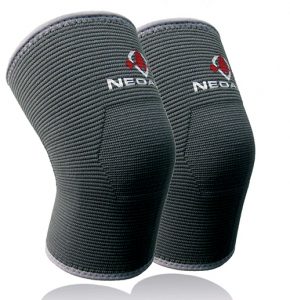
NeoAlly® High Strength Knee Sleeves
- Squat Knee Sleeve
- High Strength Support
- Strong & Durable
- Squat & Power Lifting
- Extra Thick Weaving
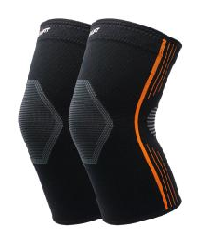
NeoAlly® Breathable Compression Knee Sleeves
- Health Knee Sleeve
- High Compression
- Breathable
- Anti-slip Lock
- Light Weight
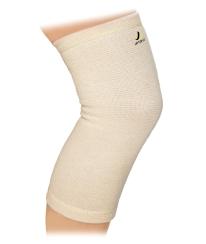
Uptofit® Copper Knee Compression Sleeve
- Health Knee Sleeve
- Copper Rich
- Moderate Compression
- Breathable
- Light Weight
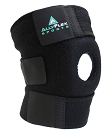
AllyFlex Sports® Patella Stabilizer Knee Brace
- Patella Stabilizer Knee Brace
- Extra Thick Neoprene
- Stronger Support
- Open-Ring Patella
- CoolMax® Lining
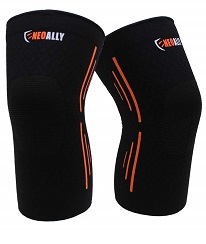
NeoAlly® Sports Knee Compression Sleeve
- Sports Knee Sleeve
- Thin Light Weight
- Consistent Compression
- Breathable
- Anti-slip Lock


